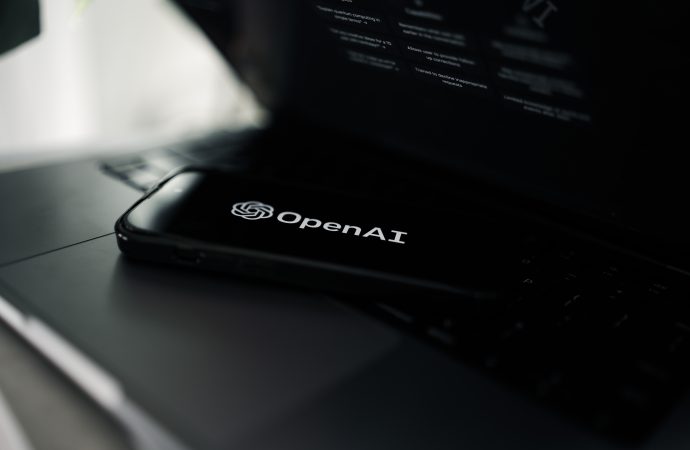Welcome to the age of chatbots, where artificial intelligence (A.I.) is transforming communication as we know it. From customer service and sales to personal assistance and entertainment, chatbots are making interactions faster, easier, and more efficient than ever before. However, with great power comes great responsibility – and if you’re not careful, your A.I. chatbot
Welcome to the age of chatbots, where artificial intelligence (A.I.) is transforming communication as we know it. From customer service and sales to personal assistance and entertainment, chatbots are making interactions faster, easier, and more efficient than ever before. However, with great power comes great responsibility – and if you’re not careful, your A.I. chatbot development can fall into some common pitfalls that can hinder its success. Fear not! In this article we’ll explore how to avoid these pitfalls so you can create a killer chatbot that will revolutionize the way you connect with users. Let’s get started!
Learning the Basics of A.I. Chatbot Development
There are a few basics you need to know before starting development on your own chatbot.
First, you need to understand what a chatbot is. A chatbot is a computer program that can interact with people online. They can be used for a variety of purposes, such as customer service or customer engagement.
Second, you need to understand how A.I. works. A.I. is all about making machines act like humans by learning from data and making decisions on their own. This technology has been used in many different fields, including finance and health care.
Third, you need to understand the basics of bot development. Bot development involves creating a software program that interacts with people online using natural language input and output. There are many different ways to do this, but some of the most common are text editing, user interface design, and web scraping (reading and parsing web pages).
Fourth, you need to understand the basics of programming languages. Programming languages are the codes that allow us to create our own programs and make them work as we want them to. There are dozens of different programming languages out there, but some of the most common ones include Python, Java, and JavaScript.
Finally, you need to understand how bots work in general. Bots work by interacting with people online using natural language input and output. They use sophisticated algorithms to process these interactions and learn from them in order to improve over time
Choosing the Right Technologies for Your Bot
The technologies you choose for your chatbot will play a critical role in its success. Here are three key considerations:
1. Bot Platform: The first decision you’ll need to make is which bot platform to use. There are a number of options, including Microsoft Bot Framework, Google Chatbots, IBM Watson Assistant, and Facebook Messenger Bots. Each has its own strengths and weaknesses. A word of caution: Make sure you choose the right platform for your needs! Too many developers use the wrong platform and end up frustrated because their chatbot can’t do everything they want it to.
2. Bot Scripting Language: After you’ve chosen a platform, the next step is to select a bot scripting language. There are a number of options available, including Python, Java, Node.js, and JavaScript. Again, this choice is important – make sure you choose the right one for your project goals and needs!
3. Chatbot Development Tools: Finally, you’ll need some tools to help you build your chatbot – both development tools (like code editors and bots) as well as messaging platforms (like Slack or Facebook Messenger) that your chatbot will be using. These tools can be costly but are definitely worth it if you want to make your bot successful!
Considering Contextual Intelligence
Contextual intelligence is an important part of any chatbot’s development. When building a chatbot, it’s important to consider the contexts in which the bot will be used and how those contexts will affect its interactions.
One way to ensure that your chatbot is contextual is to create prototypes with actual users in mind. This way, you can see how the chatbot would behave in different scenarios and determine where improvements or adjustments are necessary. Additionally, it’s important to track user feedback throughout the development process so that you can continue to improve your chatbot’s interactivity.
Another way to contextualize your chatbot is through data analysis. By understanding how users use your bot and what they’re looking for, you can tailor your content and interactions accordingly. This approach can help you minimize user confusion and optimize engagement rates.
Finally, it’s important to design your chatbot with empathy in mind. Building a bot that understands sarcasm and irony, for example, will make it more engaging and human-like. By taking these steps—and others like them—you can ensure that your chatbot is easy to use and provides valuable information without being intrusive or condescending.
Implementing Natural Language Processing
Natural language processing (NLP) is the ability to process and understand human language. A chatbot is a software application that interacts with humans by using natural language. To create a successful chatbot, it is important to avoid common pitfalls of NLP development.
First, it is important to recognize that chatbots are not general AI applications. They are specifically designed to interact with humans and should be treated as such. This means that the chatbot should be able to understand basic English grammar and structure, as well as idiomatic expressions. In addition, the chatbot should be able to handle common conversational tasks such as asking for directions or making a purchase.
Next, it is essential to design the user interface (UI) of the chatbot properly. The UI should be easy to use and look natural on a screen. The UI should also include buttons that allow the user to request specific information from the chatbot, such as ordering coffee or booking a hotel room. It is also important to provide feedback mechanisms so that the user can know how well the chatbot is performing. For example, if the user requests information about a product, the bot may provide a summary of its features or suggest related products for purchase.
Finally, it is essential to train the chatbot properly in order to make it effective in interacting with users. The training process includes teaching the bot how to identify specific phrases and words in English and how to respond accordingly. In addition, training may
Building an A.I. Chatbot That Works
Building an A.I. chatbot that works can be a fun and rewarding experience, but it’s important to avoid common pitfalls that could lead to a bot that is inaccurate or frustrating to use. Here are four tips for building an A.I. chatbot that users will love:
1. Choose the right technology platform
When building your A.I. chatbot, you need to choose the right technology platform. There are plenty of options available, including JavaScript, Python, and Ruby on Rails. Each has its own pros and cons, so it’s important to choose one that will fit your project goals and capabilities well.
2. Plan for user feedback
One of the most important steps in ensuring a successful A.I. chatbot is taking user feedback into account from the get-go. Make sure to create test scenarios and prototypes early on in development so that you can fine-tune your bot based on user feedback. This will help ensure that your bot is as accurate and helpful as possible for users!
3. Build a robust system architecture
A well-architected system ensures that all parts work together seamlessly in order to provide a cohesive experience for users. When building your A.I., make sure to plan for everyday challenges such as spikes in traffic or unexpected outages by designating backup systems and incident response procedures (if necessary). This will help ensure reliability and stability for your chatbot users!
Testing and Deploying Your Bot
Testing and Deploying Your Bot
There are a few things you should do to ensure your chatbot is ready for deployment.
First, make sure your bot’s code is error-free. This includes making sure all the code is properly formatted and that there are no coding errors. Additionally, it’s important to test your bot’s functionality using different input formats and scenarios. This will ensure your chatbot works as expected when users interact with it.
Next, you need to create an appropriate deployment environment. You will need to decide on a platform and framework for your chatbot, as well as a hosting provider and database provider. Make sure you have everything set up before you deploy your chatbot to users. If not, you could experience issues during or after the deployment process.
Last but not least, make sure you have a plan for user acquisition and monetization of your chatbot. This includes setting up email marketing campaigns and developing partnerships with other businesses or brands that would be interested in using your chatbot.























Leave a Comment
Your email address will not be published. Required fields are marked with *